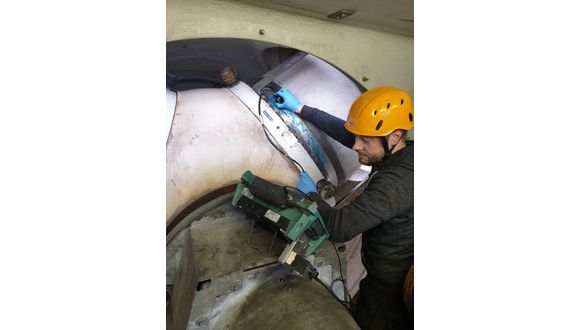Tue, 28 July, 2020
TWI recently completed a series of wind turbine inspections on several turbines, using phased array ultrasonic testing (PAUT), to examine bolt holes within the blade root area.
Procedure Development
Under a previous project, we developed a PAUT procedure that can detect and size cracks in the bolt holes and, having been validated on removed blades with known defects, it gives TWI the ability to accept or reject the blade’s condition, in accordance with the manufacturer’s acceptance criteria.
During the procedure development phase, TWI applied the technique on a large scale project for a wind farm in Europe and, since then, have delivered non-destructive testing (NDT) inspection services on seven UK wind farms.
Current Project
TWI completed PAUT inspections of the blade roots for all blades, reporting on any cracks within the blade roots and detailing the circumferential length of each crack, as well as the cumulative length of cracks within each blade root.
The key objective was to collect and analyse the PAUT data and to measure any crack indications in the bolt hole regions, which was achieved by:
- Using the PAUT system to detect and measure crack dimensions
- Scanning the probe and positional encoder around the ring on the accessible external surface, in 500mm sections
- Recording PAUT data around the ring circumference
TWI produced a report for the client that compared the most recent results with results from previously completed inspections, highlighting any changes in circumferential crack lengths.
To find out more about wind turbine blade root inspection, offshore wind turbine jacket foundation inspection, or TWI’s wide-ranging high quality support to the renewable energy industry, please follow the links.
 Figure 1. Performing PAUT scans on the wind turbine blade root
Figure 1. Performing PAUT scans on the wind turbine blade root